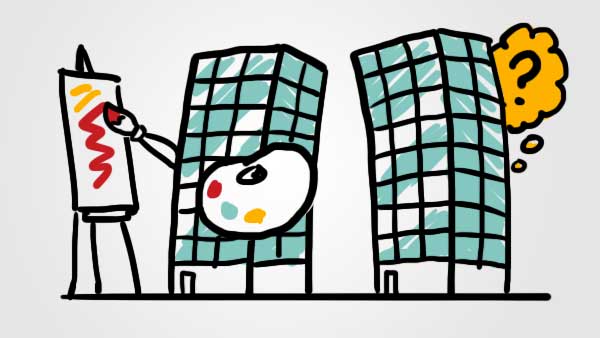Back in 2010, IBM took the initiative to assess the corporate landscape through the eyes of its CEOs. At the time, it was the largest survey of its kind. They polled over 1500 leaders across 60 nations and 33 industries. A key finding that leaped out as a surprising stat?
According to the results of the study, the most important quality for leadership success was not integrity, nor global awareness. It wasn’t business acumen.
60% of the leaders agreed overwhelmingly that the top factor in success was creativity.
Momentum for infusing creativity into business has grown exponentially over the past decade. Data from this study and other similar reports provided a helpful frame of reference.
Need some inspiration for understanding how creativity works in business?
Here are some examples we found of companies that experienced increasing success as a result of getting creative.
How Creativity Works in Business Tip 1: Design Thinking in Unexpected Places
Craig Dubitsky, founder of Hello Products, saw the potential for elevating a product everyone uses multiple times a day. Toothpaste. He combined the ethical appeal of all-natural formulation with the curb appeal of modern, eye-catching packaging. Hello toothpastes are free of any dyes, artificial flavors, microbeads, parabens or glutens. And they come in tasty flavors like Organic Apple.
The takeaway – even when it comes to a commodity commonly taken for granted, you can still make disruptions. Simply look at the product with a set of fresh eyes. Dubitsky’s risk – introducing a new company into a $40 billion dollar industry long monopolized by just 3 major brands –paid off. Last year’s revenue was expected to top $20 million.
So pivot to a different audience if your company’s products, ideas, or outcomes are stale – even taken for granted. Or even explore another avenue that may appeal to a broader range of clients.
How Creativity Works in Business Tip 2: Creative Time is Money
Google famously allows their employees to spend 20% of their time exploring their own ideas and experimenting. This idea is perhaps the gold standard for encouraging creativity in business, and with good reason- some of Google’s most successful (and profitable) products emerged from their 20% rule, including AdSense, Google Maps, and even Gmail. Here’s a great video explaining how (and why) the policy is so successful.
Other companies that encourage dedicating time to creative pursuits include powerhouses like Facebook, Apple, and LinkedIn; hugely successful platforms like Twitter and Slack resulted from similar efforts.
The moral of the story?
Fostering an environment where experimentation and iteration in the name of creativity not only does wonders for employee morale, it ultimately might even contribute to the company’s bottom line.
Of course, not every organization is equipped to do this on Google’s scale. But you could introduce the concept incrementally. For example, a quarterly “hack day” or a monthly “innovation lab”.
It’s also important to be unequivocal about the parameters. Give enough latitude for employees to select their own path to pursue. Put some boundaries around the time depending on your specific capacity (i.e. maybe you can’t have them dedicate 20%, but 10% is plausible). Once an idea is fully formed, assign a business sponsor to evaluate its potential.
As one entrepreneur points out, all employees are going to “slack off” at some point. By implementing an idea like this one, at least you’re giving them the freedom to slack off productively!
How Creativity Works in Business Tip 3: Fail Fast, Succeed Sooner
Another juggernaut of remarkably successful companies – Coca-Cola, Netflix, and Amazon – have an unconventional method of using creativity to great effect in business: encouraging failure. It’s a well-known phenomenon that most individuals avoid thinking outside the box primarily because they’re afraid to fail. And even if that fear isn’t completely hindering your creativity, it may be influencing your creative thoughts or dictating how you approach a problem.
By establishing that failure is just another step on the long journey to success, rather than a stopping point, you give your team the opportunity to think freely, take calculated risks, and build trust. Some companies even celebrate mistakes with champagne or pizza.
The message is the same- in order to make an omelet, you’re going to have to break a few eggs.
Creativity is rarely instantaneous or clean. We have logic for that. So be sure that your team is aware that they are operating in a flexible and failure-friendly culture. There are significant rewards for this culture. More ideas, more learning and growth, and a team that appreciates the freedom to bravely venture forth and try new approaches to the same old problems.
According to Adobe’s 2016 “State of Create” report, businesses that invest in employee creativity see increased productivity, more satisfied customers, and they’re more financially successful overall.
Take a few tips from these pros. You’ll be on your way to a more creative team and a more prosperous future in no time!

